I don’t feel quite ready for Ireland’s highest mountain just yet, so instead I went for the holiest instead. Croagh Patrick, also known as the Reek, is a pilgrimage site where it is said that St. Patrick expelled the snakes from Ireland. I travelled to Westport on the other side of Ireland in order to see the mountain for myself.
1
I’ve recently started reading more books about Ireland. One such book is Patrick: From Patron Saint to Modern Influencer by Alannah Hopkin. In this book, Hopkin details how a Romano-British missionary ended up becoming a Saint and the symbol of Ireland. One chapter of her book details the miracles attributed to the saint, and one of the many pilgrimages that are done in Patrick’s name.
This is how I learned of Croagh Patrick, and the yearly pilgrimage that occurs on the last Sunday of July. Also known as the Reek, it is said that Patrick climbed the mountain and fasted for 40 days and 40 nights where he had to fight off either demonic birds or a serpent demon. After doing so, God gave him the right to judge the Irish, and snakes were banished from the country.
I’m not a believer in any of this, but I was still fascinated by this holy site. After checking the weather we found a sunny Sunday, booked ourselves a hotel in Westport, and we were set to journey to the other side of Ireland and climb the Reek.
2
We woke up in Westport and I went down for breakfast first. I sat with a view of the mountain as I ate my Full Irish (basically a Full English, except it also has white pudding. Unlike it was for Slieve Donard, there was no fog. You could see the entire mountain, except for a cloud that lingered on the peak. I wondered if it would clear away before we reached the top, or if we would be walking through the clouds again.

After breakfast we got ourselves a taxi to Murrisk, a village to the north of the mountain. This is the start of the route most people take today, though it is thought that people originally climbed from the east. We were dropped at the car park conveniently placed at the start of the modern pigrimage route.
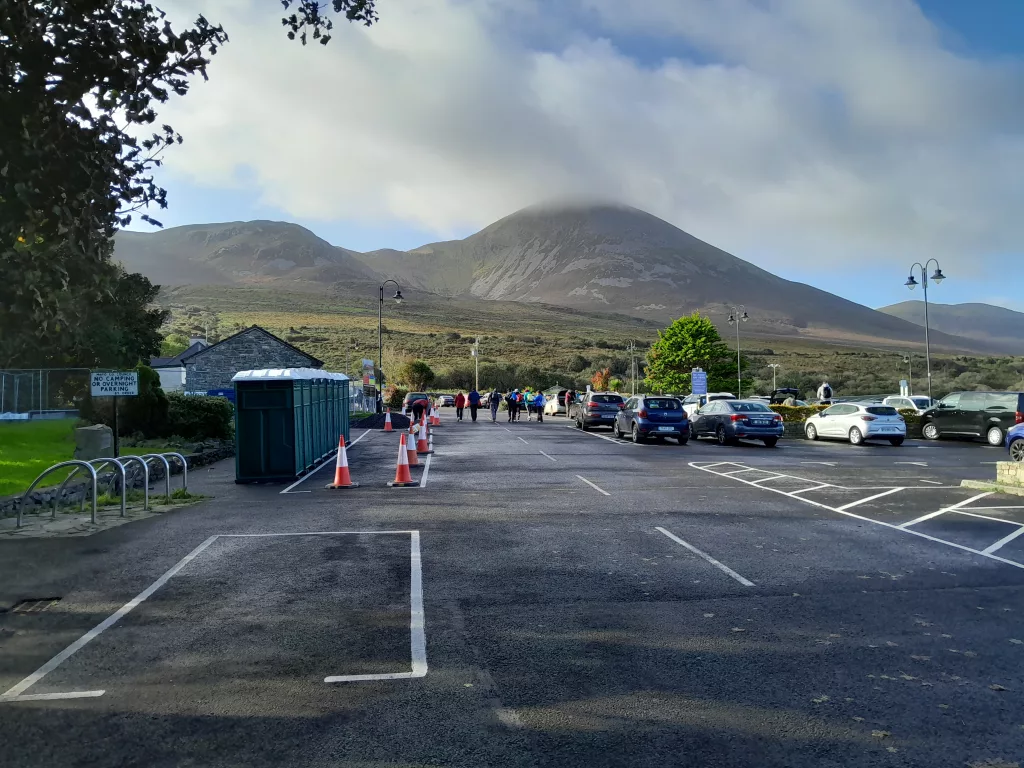
Our ascent started on a somber note as we took a moment to view the famine memorial before we began our ascent: a boat adorned with skeletons, symbolising those who died trying to escape the famine by setting sail from Ireland.
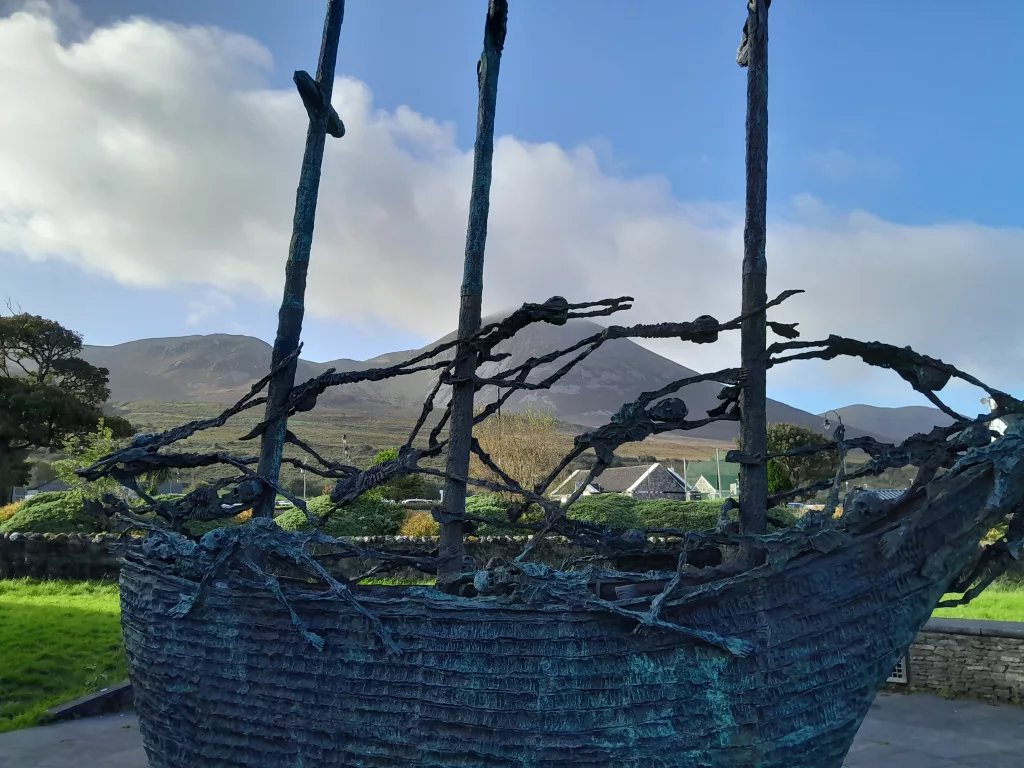
It is recommended that you use walking sticks to climb the mountain, as the climb can get pretty tough. So naturally, at the base of the mountain there are people selling walking sticks made from birch branches. One vendor sells them at 3 euro, the other sells for 4 euro, but promises 2 euro back when you return it. We took the 4 euro option.
The vendor directed us down the road to where the pilgrimage starts. It was time to climb the holiest mountain in Ireland.
3
We reached the steps that would take us onto the mountain path. A sign welcomed us to the pilgrimage site, alongside advice on how to stay safe and instructions for the stations should people wish to perform the pilgrimage properly.
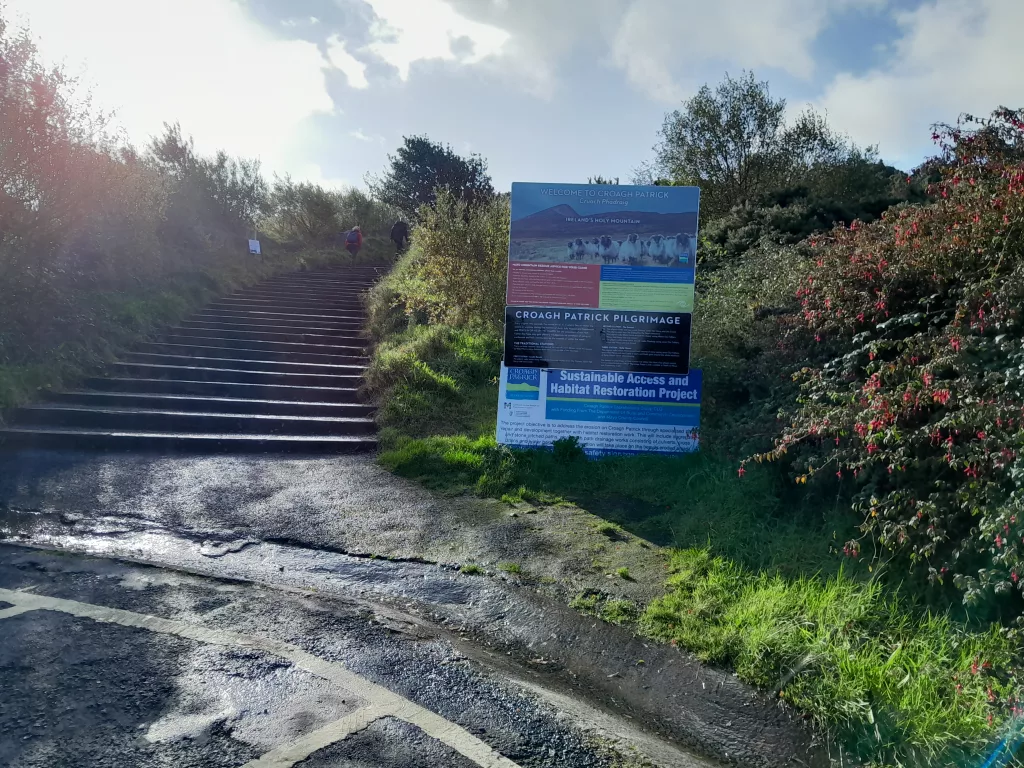
For a moment I was worried that this would be like hiking mountains in China – steps all the way up. That is when we came across the statue of St. Patrick, and behind him, a rocky path leading up the mountain.
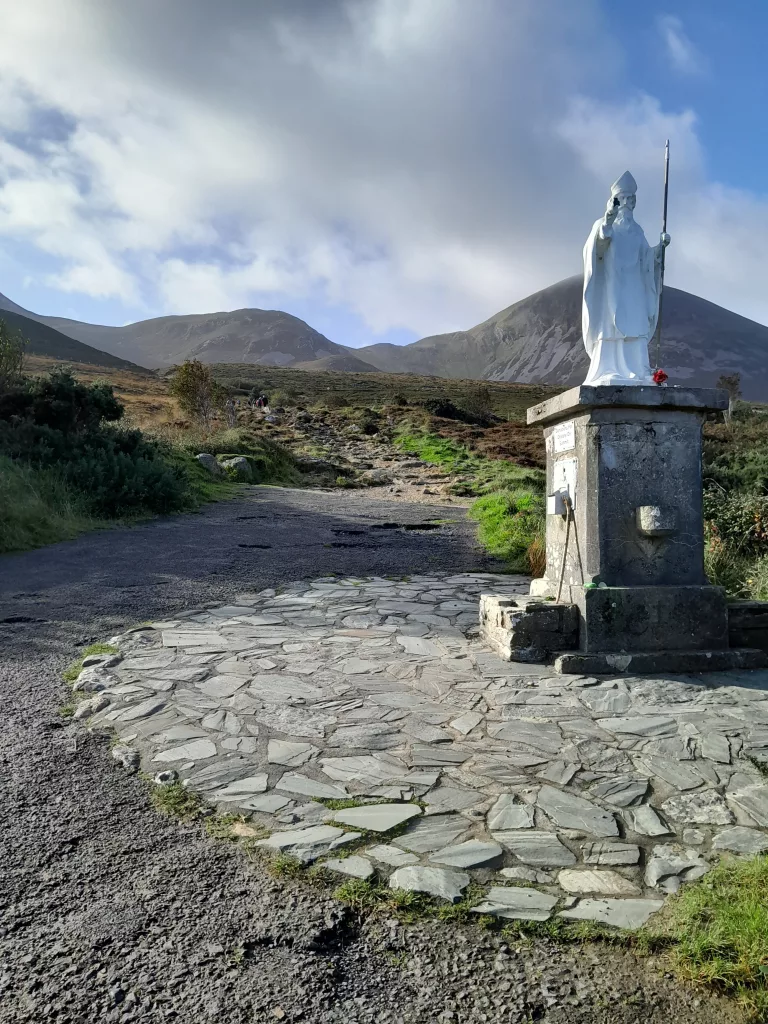
This part of the path felt harder than Slieve Donard. Slieve Donard had a park followed by a walk along a river in a farm before it became difficult. Here, we were scrambling over the rocks from the get go. Half way up to the ridge we turned around and could already see great views of Clew Bay.
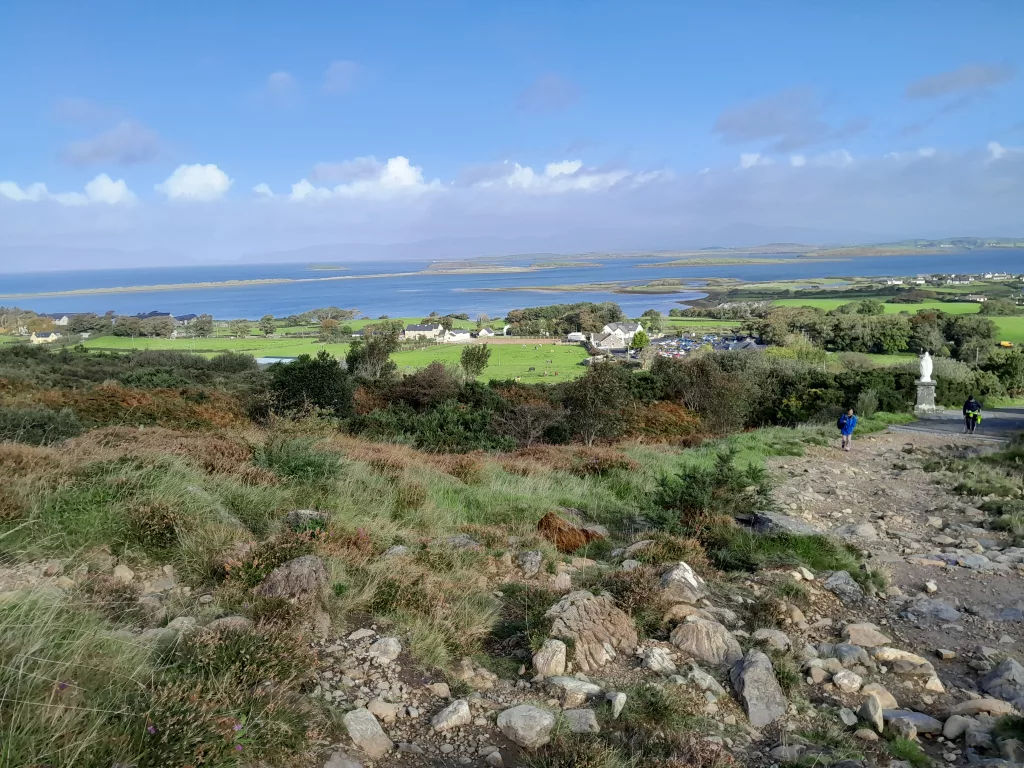
As we ascended we could the clouds faded away from the mountain, revealing the infamous pointed peak that was our goal. Already finding it harder than Slieve Donard, we were worried we may not make it up this one.
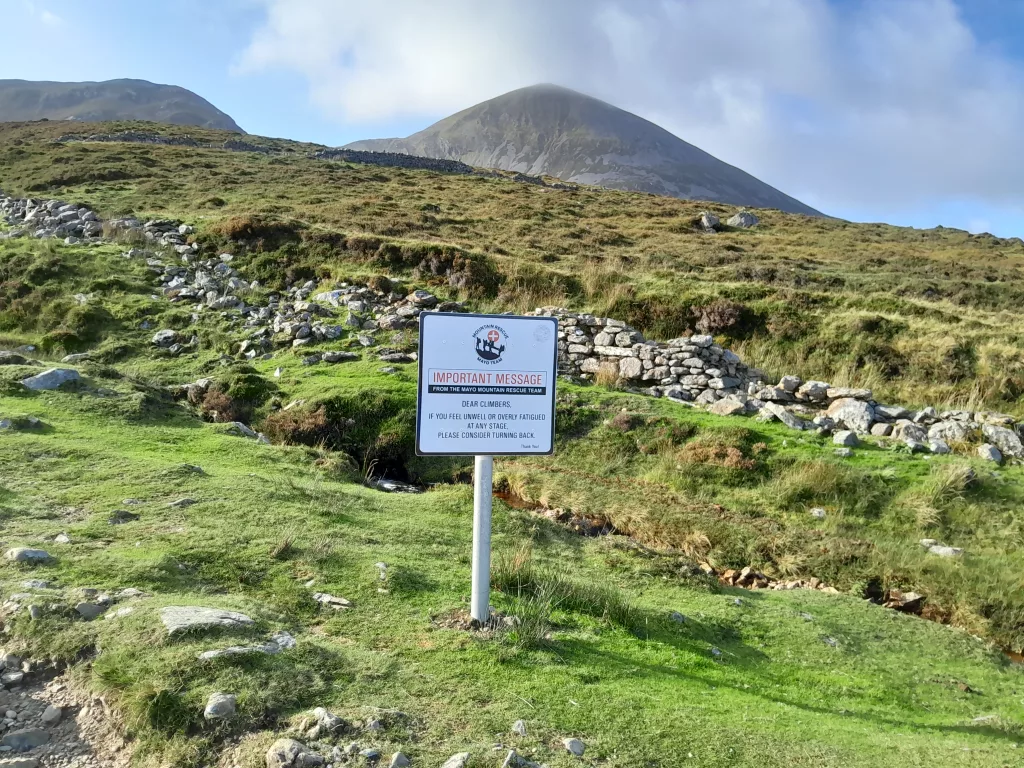
Many people are injured on this mountain, especially during Reek Sunday, so the path has a few signs recommending hikers turn back if they feel unwell or fatigued. There are even defibrillators at a couple of places along the path.
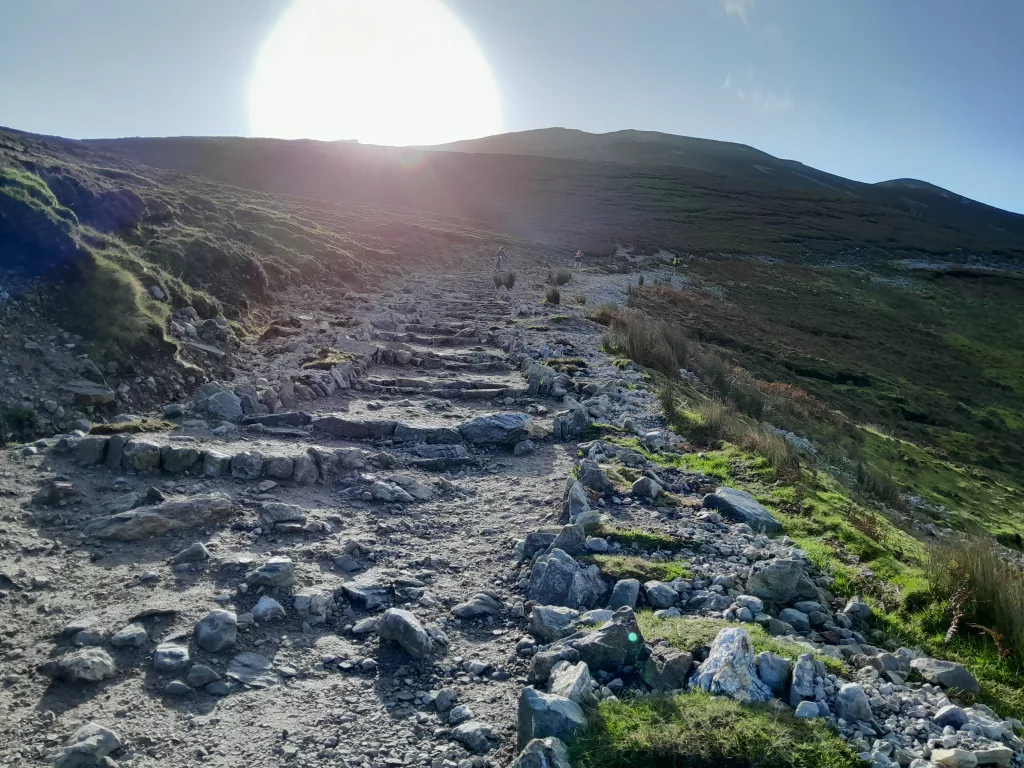
We made it to the ridge and took a short rest next to a cairn. The path was a lot flatter here, and the walk became easier. But as we got closer to the Reek we could see how steep the path was about to become. The clouds had cleared away so we wouldn’t have to deal with low visibility and rain at least. But we were reminded of the Saddle, and this path looked longer.
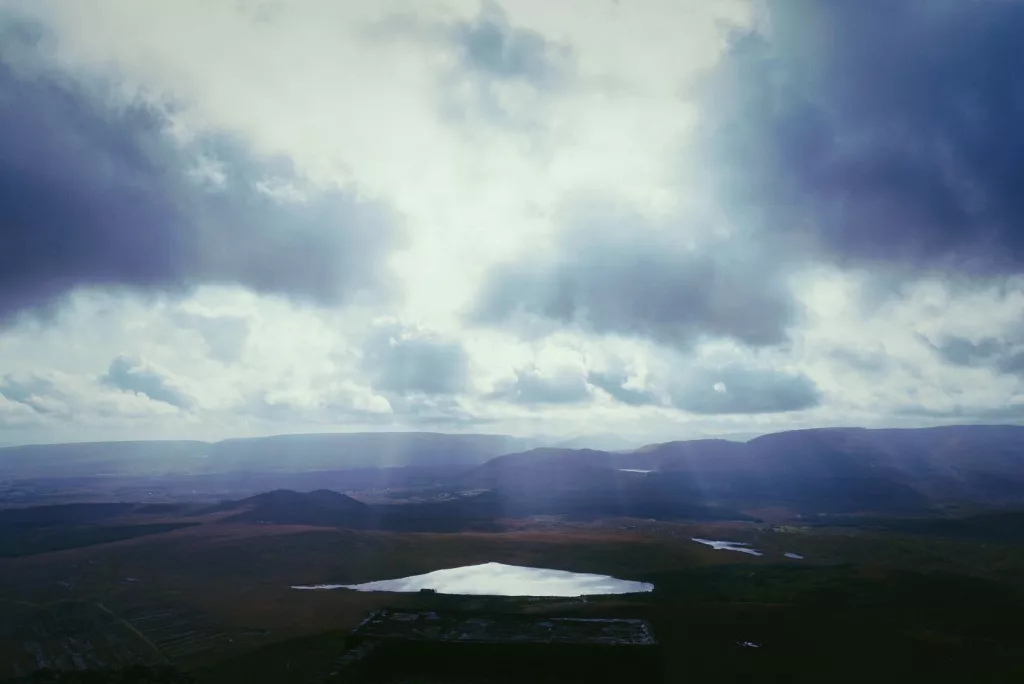
It turned out to be more scary than hard. Despite my love for fellwalking, I actually have a fear of heights, and I get vertigo easily. As we were climbing the steep path I would look to my left and see only the huge drop to Lough Nacorra, the lake were Patrick is supposed to have banished the snake demon. My head started spinning so I focused on the path before me, refusing to look down again.
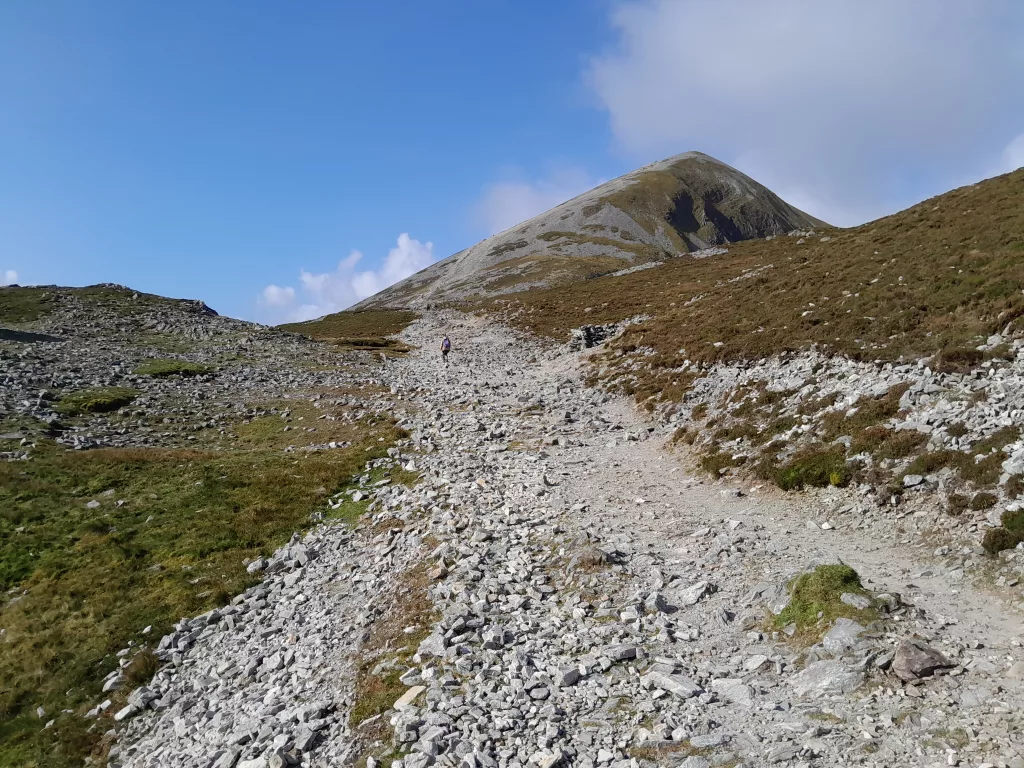
Eventually we made it to the top, where we found the oratory built in honour of St. Patrick’s fast.
4
As was expected, the wind was strong across the peak, and it was freezing. We took some time to explore and take pictures before taking shelter from the wind. We were expecting the oratory at the top, but there were a few other things here as well.
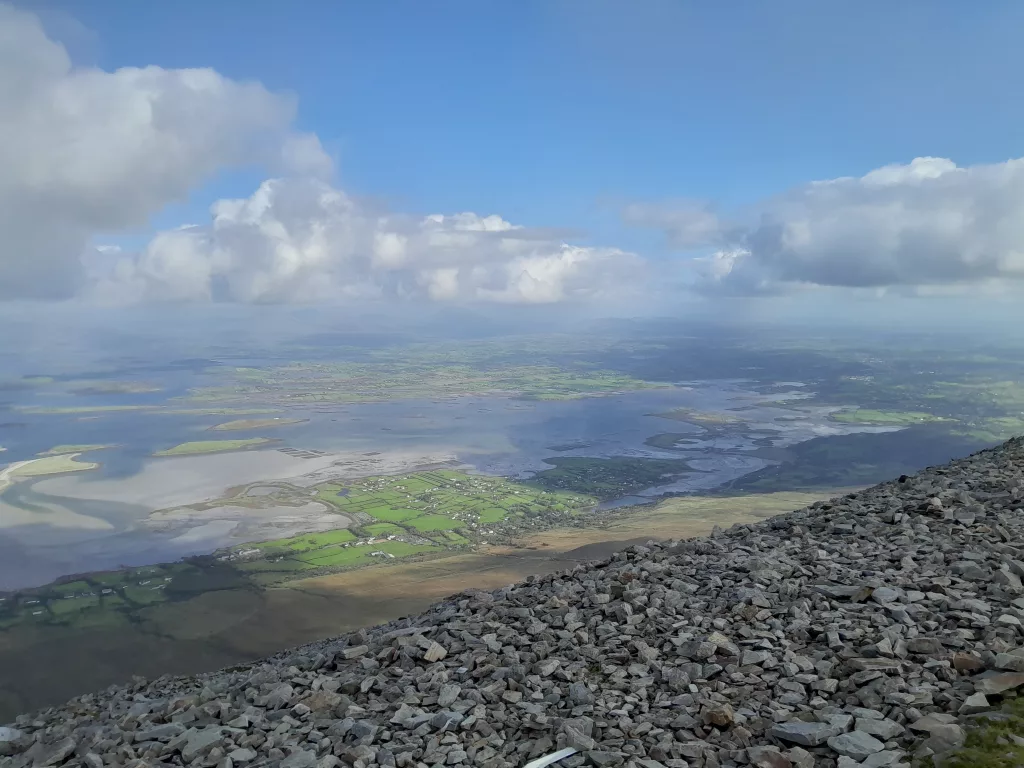
We found the supposed bed of St. Patrick that he slept upon during his time up here. Praying, sleeping on rocks and fighting demons to rid Ireland of snakes.
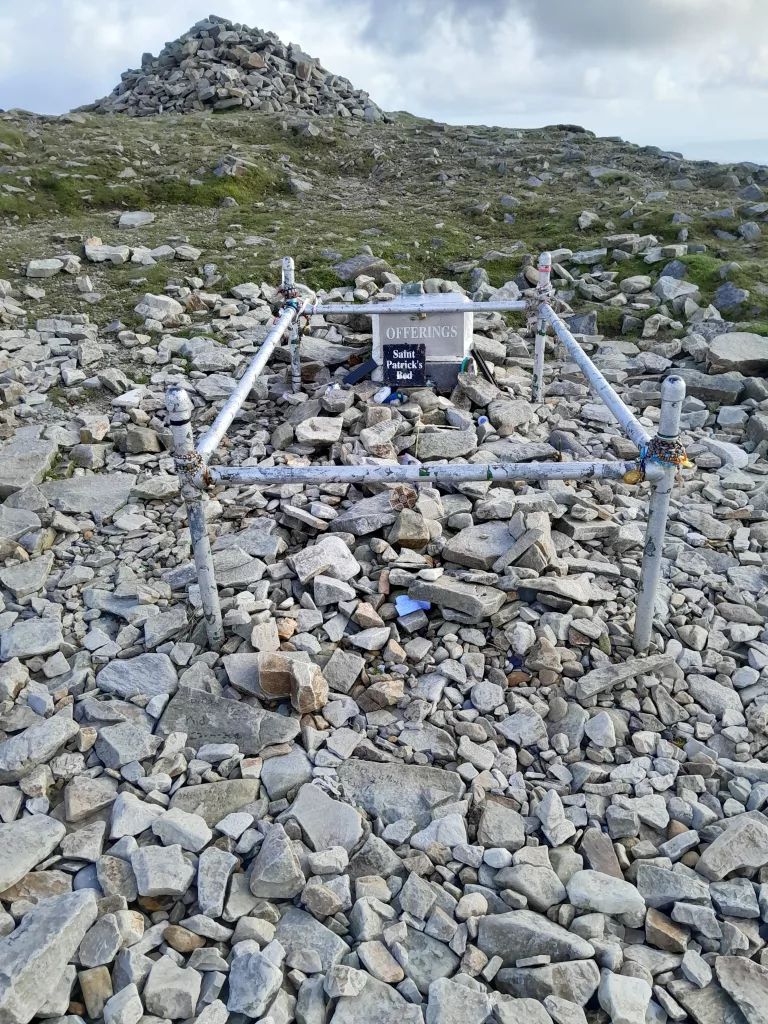
The oratory is a reconstruction, but it is still in use. We couldn’t go inside, but there are services on the last Sunday of July when many pilgrims climb the mountain.
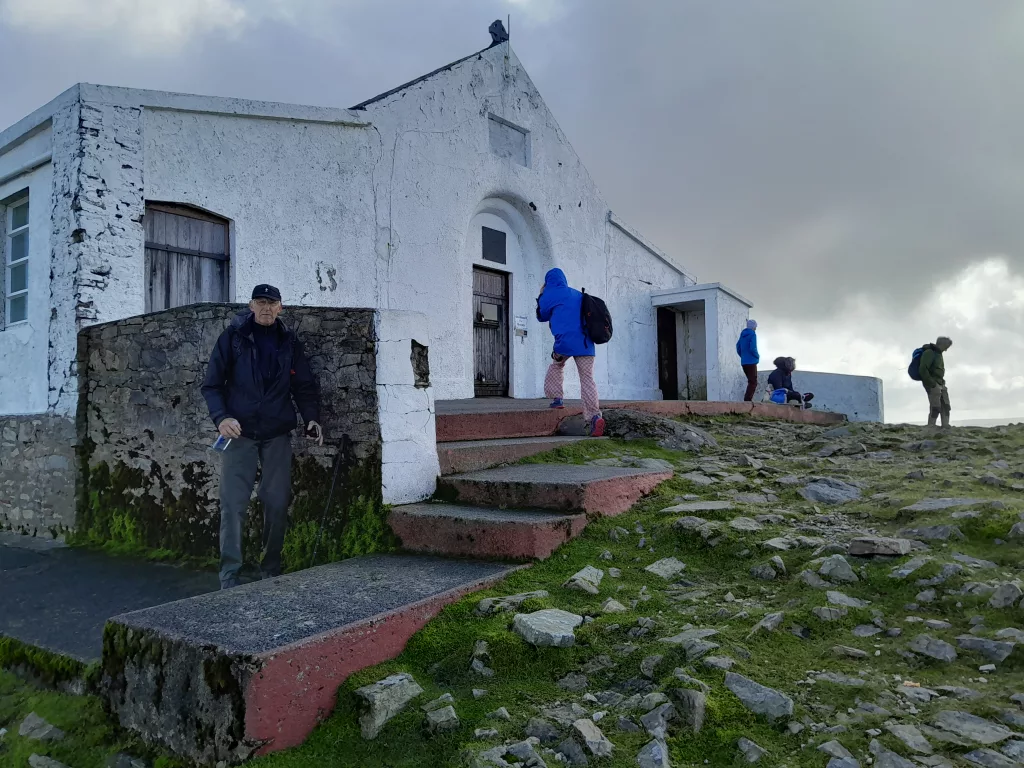
Since this is perhaps one of the most popular mountains to climb, there are actually public toilets here. We took advantage before we settled down for lunch, using the oratory to shelter us from the wind.
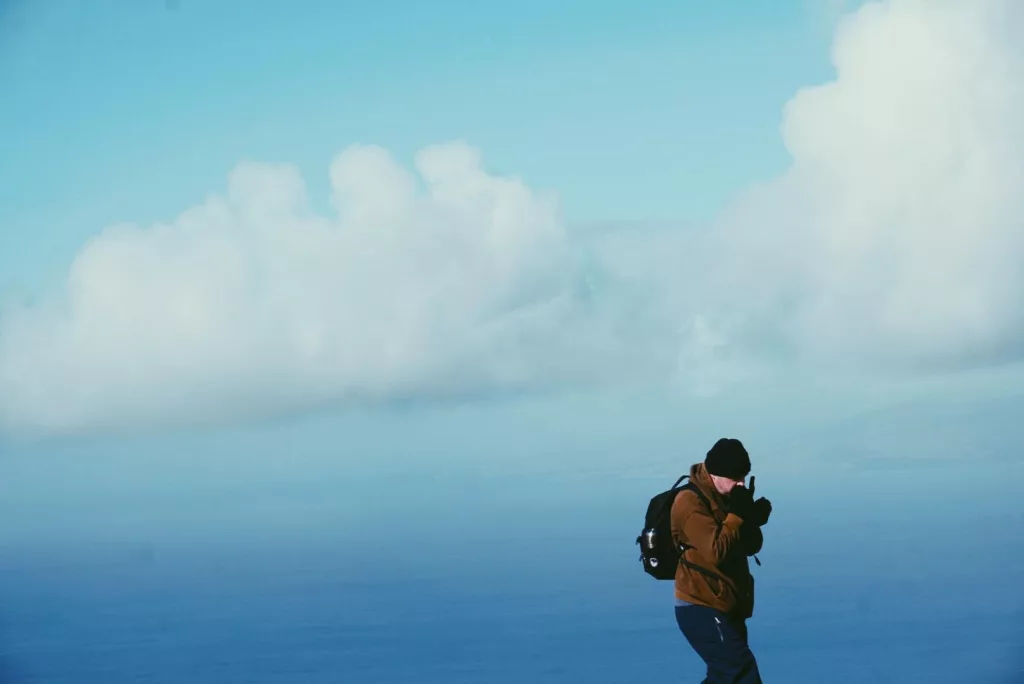
After warming ourselves up with tea from the thermos, we took out pictures to prove we were here, and started our descent.
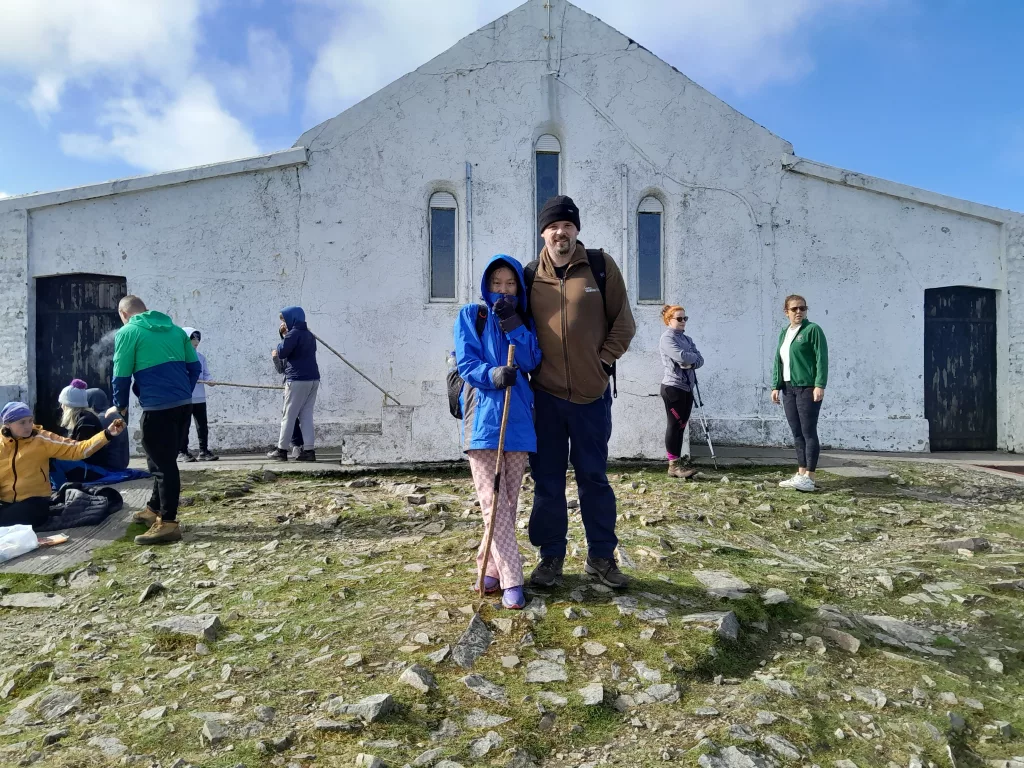
5
Descent was a lot easier than we expected. The fear I experienced climbing up had gone, and we made a decent pace on our way back down.
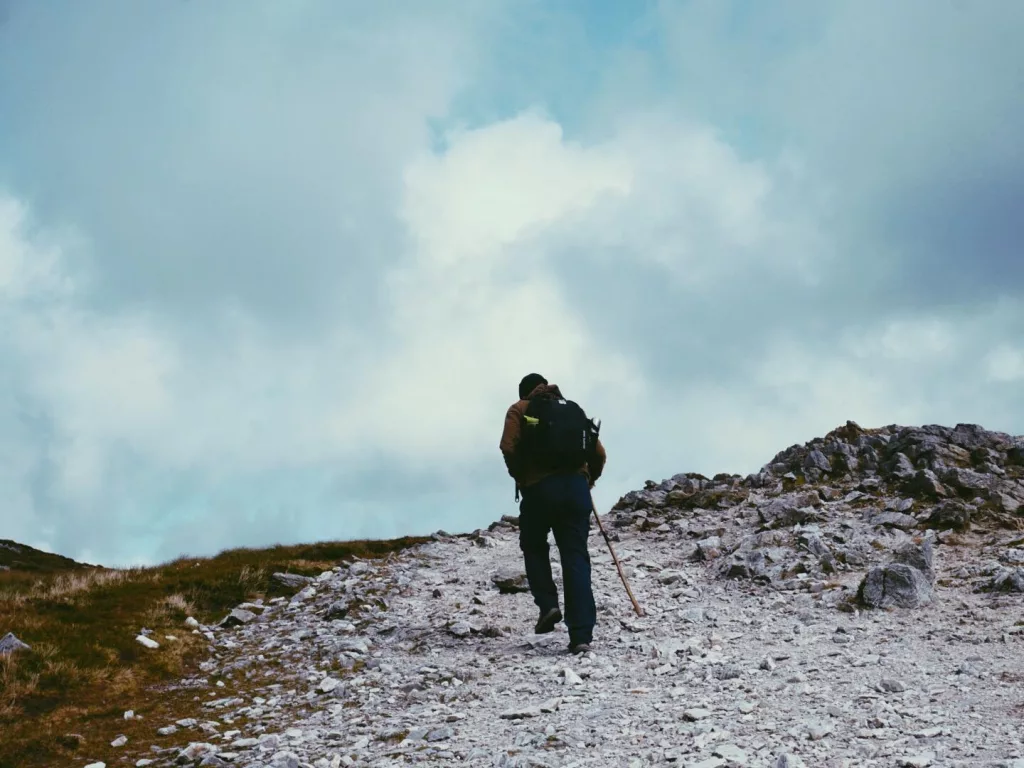
As we descended we came across someone climbing the mountain barefoot. This is something pilgrims often do, either as a form of penance, or simply as a challenge. It’s a practice discouraged by the local church, as the wrong footing can lead to injuries including deep lacerations and broken bones.
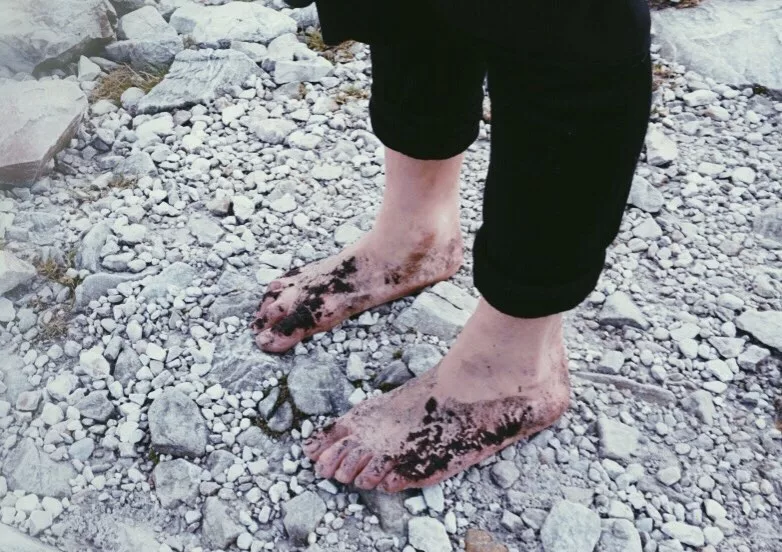
We reached the base again, just in time for our bus. We looked for the man selling walking sticks so we could get our deposit back. Of course, he had disappeared. Our disappointment quickly disappeared, as a beautiful rainbow had formed over the bay before us.
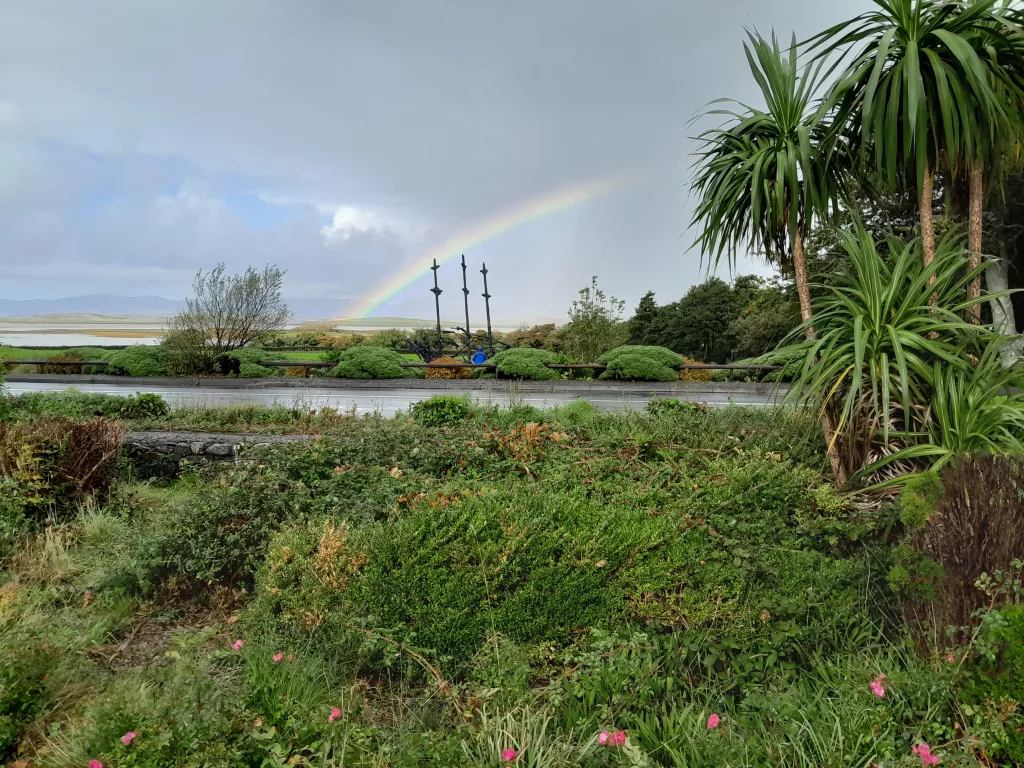
It was time to head back to Dublin and discuss our plans for future hikes in the country.




